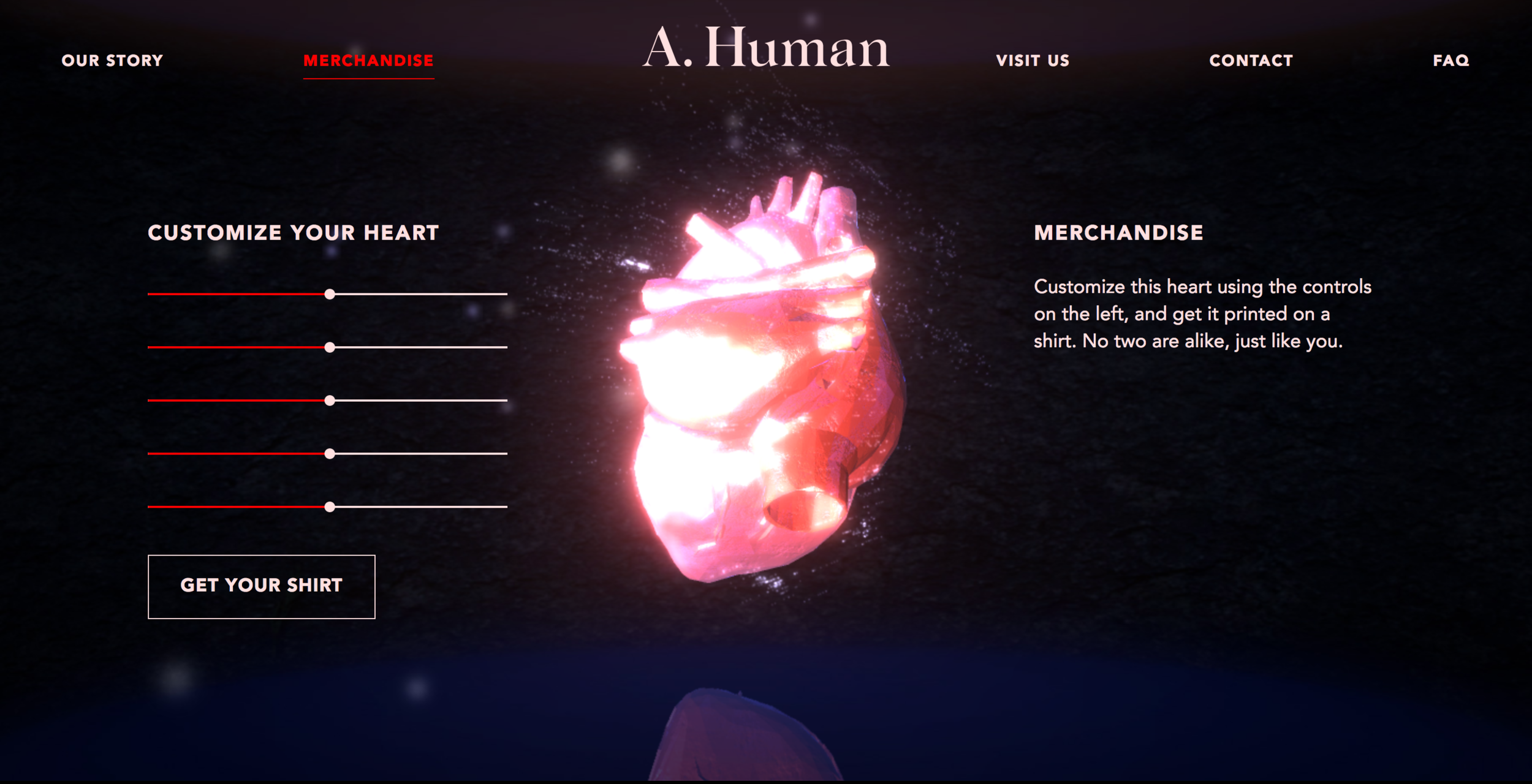Store? Installation? Gallery? Who cares?
Adam Shilton
Among the shows and parties of this September’s New York fashion week, the headline for me was new accessories brand A.Human who created an immersive showroom aiming to throw a spotlight onto our preconceived ideas of beauty while showcasing their Spring/Summer ’19 collection. The brand which disrupts traditional perceptions of beauty and fashion, has already created social media excitement with the likes of Kim Kardashian and model Chrissie Teigen sporting their body-modifying designs. The immersive space labelled “a fashion showroom of the future” took guests through a series of atmospheric, sensorial rooms in which motionless human mannequins wore prosthetic pieces from the collection - we’re talking rhino horn-like shoulders, biological snail like ‘heels’ and gill like necklaces - set against a darkly theatrical backdrop. While the pieces were only available for pre-order, ahead of the Spring/Summer launch, the immersive experience culminated with an inevitable merchandise opportunity where (as online) guests can create a personalised A.Human tshirt printed with their bespoke design.
Source: A.Human
How then, does one define this experience? An experiential retail showroom? A multisensory store? A prosthetic pop-up pavilion? Or does it in fact even matter?
“Retailtainment” the namesake used to articulate the blurring of boundaries between fashion, retail, art and culture is by no means a new concept. In his 1999 book “Enchanting a Disenchanted World: Revolutionizing the Means of Consumption” George Ritzer described "retailtainment" as being the "use of ambience, emotion, sound and activity to get customers interested in the merchandise and in a mood to buy." While creating captivating and unexpected real-world experiences to attract customers is by no means a new concept for retailers (think online mattress retailer Casper and their touring ‘Nap Truck’ offering sleep pods to customers or online fashion retailer Everlane’s immersive Shoe Park pop-up in New York) it is a relatively recent phenomenon that sees these experiences being presented as front and centre.
“In his 1999 book “Enchanting a Disenchanted World: Revolutionizing the Means of Consumption” George Ritzer described “retailtainment” as being the “use of ambience, emotion, sound and activity to get customers interested in the merchandise and in a mood to buy.”
Unquestionably at this experience-first end of the spectrum is the new Gentle Monster flagship in London’s West End which opened earlier this summer. As with the brand’s other outlets in Asia and the USA, the store offers a single-minded theatricality to the customer experience. Upon entering the two floor super-boutique you are met by an army of motionless extra-terrestrial-kung-fu-warriors instead of anything resembling a retail fixture. Every 3 minutes a gong, sitting atop a quasi-lunar lander, crashes causing these static warriors to spring to life and gyrate in synchronicity, it’s a wonderfully bizarre spectacle. Throughout the store, you continue to be greeted by various other ‘monsters’ either sat amongst the exquisitely curated and minimal product, or peering curiously around walls at customers as they browse.
Source: Gentle Monsters
As with the immersive, theatrical experience created by A.Human, a pertinent question therefore hangs in the air - is this a store that contains an art exhibition or a gallery that contains a store? To today’s Millennial and Gen Z consumers these distinctions increasingly matter less and less. Unlike previous generations where art, design and fashion occupied distinct silos within the cultural psyche, today’s consumer’s (in part fuelled by the cross-pollinating effect of social media) recognise these distinctions less, what matters is if something is interesting or not, the level of engagement and a tribal desire to belong.
Source: Target
The Museum of Ice Cream in San Francisco taps deeply into this desire for tangible experiences where guests can have their photo taken amongst giant Gummy Bears, swing on a giant banana split, ride a Unicorn or, of course, just eat ice cream. Realising a childhood fantasy of jumping into a pool of ice cream sprinkles, founder and creative director Maryellis Bunn conceived of the idea in order to offer guests an immersive and escapist experience which plays to our universal joy of indulgence and pleasure, regardless of age. Despite its namesake though, the Museum of Ice Cream is more an immersive lactose-fuelled joyride than a museum, blurring the line between shopping and entertainment by offering guests something that not only saturates the senses but also offers the opportunity to spend. And at the Museum of Ice Cream spending is big business. Aside from the $38 ticketed entry, they offer their own label ice cream in addition to a line of accessories and apparel. Not to mention recent exclusive collaborations with both Target and Sephora who stock limited editions of clothing and makeup respectively. With other outlets planned for 2019 it seems the Museum of Ice Cream is uniquely poised to bring retailtainment to the masses at a time when ensuring that consumers are in “a mood to buy” in physical stores is more poignant than ever



